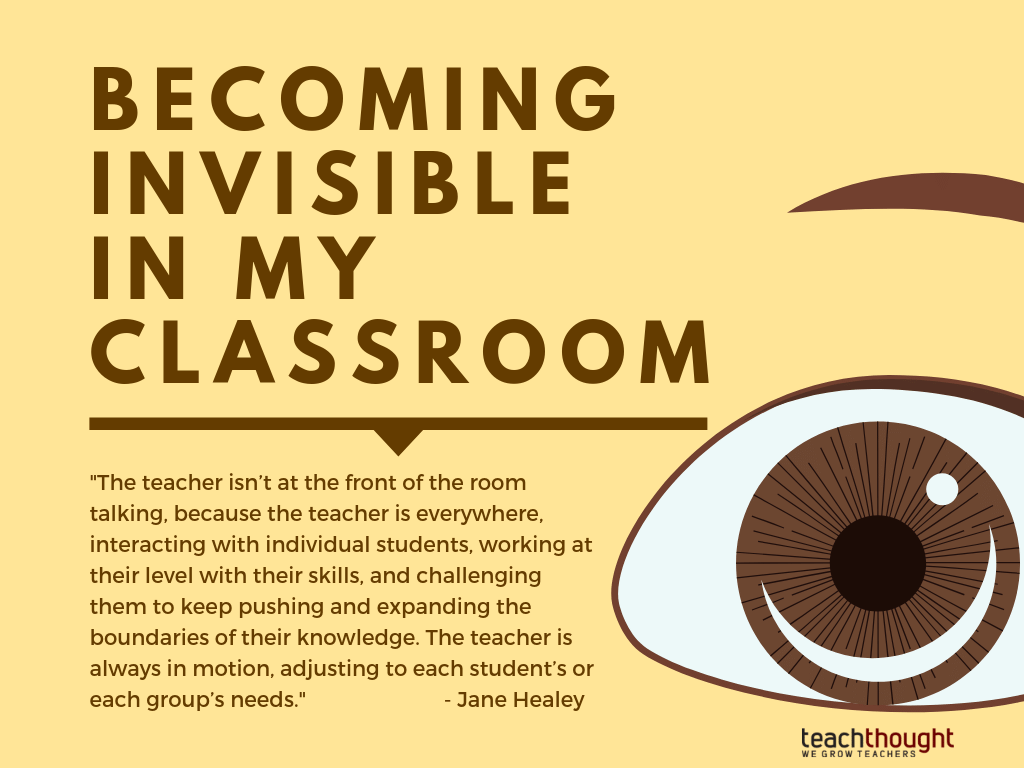
Becoming Less Visible In My Classroom
contributed by Jane Healey
“She doesn’t do anything. She gets paid to babysit us while we do all the work.”
I overheard the middle school students in the orthodontist’s office describing their teacher who “flipped” the classroom, and they were quite salty.
“She walks around watching us, and she won’t even answer our questions. She just says, “Where do you think you might find that information? It’s stupid.”
So I’m useless. Fabulous.
I’ve always thought a good teacher is like a good referee in sports: they are at their best when people don’t even notice them. In other words, if I’m doing my job well, students are learning without seeing me teach, hearing me teaching or even knowing I am teaching. If they are learning, I’m doing my job.
Beyond students, many parents and critics, especially those worried about accountability, don’t see the teaching and wonder what their taxes are paying for. They remember teachers standing in the front of the room, talking, writing on the board, pointing at sentence parts, repeating the multiplication tables, etc.
They learned in classrooms with desks in rows, worksheets, and right answers. They believe in the traditional image of a teacher. So in a contemporary educational world, what constitutes teaching? What do classroom teachers get paid to do?
In an innovative, digital classroom, observers might see a teacher wandering around from student to student answering questions about writing a paragraph. Or, they might watch a teacher leaning over students’ shoulders pointing at the “About us” button on websites to check credibility. Or, they might catch the scene of a teacher kneeling next to a table guiding a group trying to solve a math problem about a pyramid made of pennies.
What they won’t see are the hours of prep work finding a “problem that matters”, creating LibGuides for safe web crawls, and setting up the Question Formula Technique for students to create essay questions. They also won’t see the hours of assessments based on rubrics the teacher coached students to develop.
In contemporary classrooms, students are working to publish their own books, annotate readings, perform background research, design sets for a play, create book covers, and gather primary documents for an exhibition. The teachers invested time setting up the activities with the appropriate parameters and materials, all the while assessing more about student performance than ever.
The teacher isn’t at the front of the room talking, because the teacher is everywhere, interacting with individual students, working at their level with their skills, and challenging them to keep pushing and expanding the boundaries of their knowledge. The teacher is always in motion, adjusting to each student’s or each group’s needs.
As one of my favorite mentors said, “We build the sandbox, and they play in it.” I have to build the sandbox, orchestrate, and connect students with networks and resources, making hundreds of adjustments on the fly.
So I’m not exactly useless, just less visible, my voice and ideas and coaching in different places than they were before.
Image attribution flickr user flickeringbrad; Becoming Invisible In My Classroom Through The Flipped Classroom